
[IT168 evaluation] time unconsciously came to the end of 2016, although this year's mobile phone market is still filled with smoke, but the high-end mobile phone market is still a lot quieter. The slowdown in the pace of industry innovation has caused some mobile phone manufacturers to enjoy the ever- remaining dividends in the post-Internet + era. The high-end user base has also become a point of competition for many mobile phone brands this year. When the exchange market comes, users are more rational about the choice of smart phones, so for manufacturers, the accumulation of technology research and development, deeper offline channels are increasingly important. The success of the Kirin 960 chip recently released makes Huawei the first terminal manufacturer to vertically and completely cover the components of the SoC. This killer makes it possible to deal with the increasingly transparent supply chain in the environment without the need for Huawei to be able to manage products. Control and innovation have advantages that other manufacturers can't match.
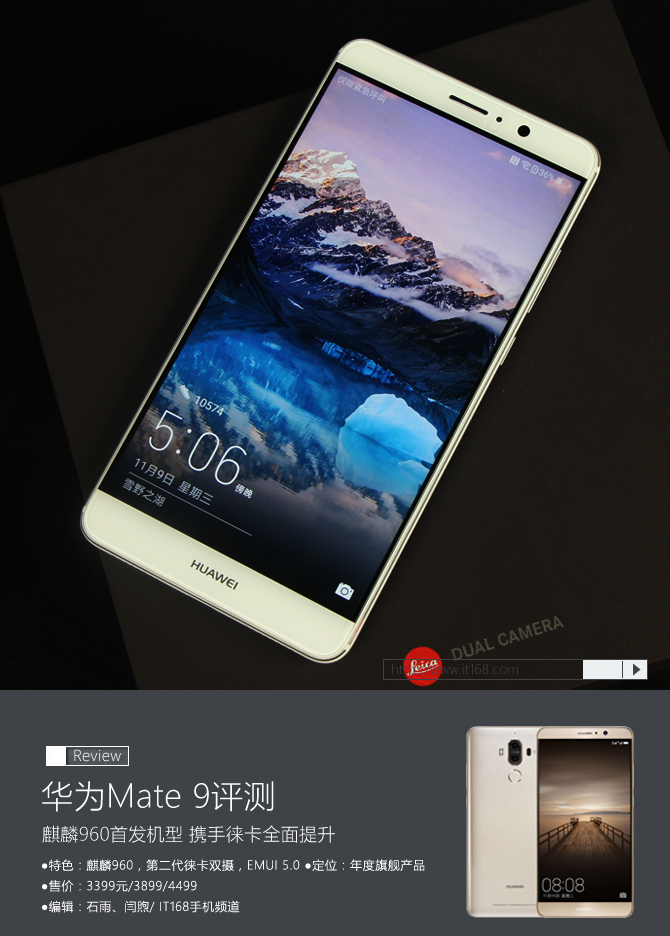
In terms of branding, Huawei focused its marketing strategy on international brands, tapped users' pain points on products, and gradually stood in the high-end mobile phone market. In the product line of Huawei mobile phones, the Mate series has now become the gold medal for the main performance and experience products in the Huawei product line. In this year's high-end market, with little fatigue, as the flagship of the year, Mate 9 can continue its predecessor's glory, and bear the flagship name, which is what we need to understand in this evaluation.
Hardware parameters:
Defined in the annual high-end flagship Mate 9, naturally attracting a lot of attention in the hardware configuration. Especially with the addition of Kirin 960 this year, everyone is curious as to whether this domestically produced chip can meet the current industry-leading standards in performance. In addition, the second-generation Leica dual camera that was added to the Mate series for the first time brings better image quality. At the beginning of the evaluation, we first look at the table, how Mate 9's hardware configuration.
Huawei Mate 9 basic parameters screen characteristics 5.9 inches 1920x1080 resolution body size 156.9x78.9x7.9mm body weight 190g processor Kirin 960, the highest frequency 2.4GHz network mode dual card dual standby full Netcom body memory 32/64/ 128GB running memory 4/6GB camera features 20 million black and white + 12 million color dual camera / 8 million front camera features part of the super charge, knuckle operation, security base station battery capacity 4000mAh lithium polymer battery, support 5A high current operating system EMUI 5.0 , based on Android 7.0 body color sky gray / moonlight silver / champagne gold / mocha gold / ceramic white /Sales price 3399/3899/4499 ã€Click to view】
Through the table you can see that Huawei Mate 9 is still in the flagship level in terms of configuration, and the biggest highlight is the application of the Kirin 960 and the upgraded second-generation Leica dual camera. As the strongest domestic processor, the Kirin 960 uses ARM's latest A73+A53 architecture (16nm process), Mali-G71 graphics processor, memory transfer specifications to UFS 2.1, and also supports the CDMA network standard. Unicorn's first full Netcom chip without external baseband.
In addition, this year's dual camera is undoubtedly the hottest topic of mobile phone ring. As a representative manufacturer of domestic mobile phone dual camera, Huawei naturally brings in the new upgrade of the second generation of Leica dual cameras Mate 9, Mate 9 camera 12 million color lens + 20 million black and white lens combination, in the process of taking pictures, dual cameras work at the same time, color camera to capture color and restore, black and white camera is used to capture the details of the picture. As for the true strength of Mate 9, we will also mention it in detail in the following evaluation. Of course, the hardware configuration is just the basis of the mobile phone experience. As an annual finale product, whether it is possible to use the good hand in the hand to bring about a further improvement in the experience is the true test of the repair of a product's internal strength.
Appearance Industrial Design: Continuation of Mate Series Classics
Huawei's brand has always had a pragmatic and reliable image, which is also reflected in its product design. In particular, the Mate series has laid a calm and atmospheric design style at the beginning of its birth. Each subsequent generation of products follows this framework and is constantly polishing for details. Therefore, the Mate 9 presented in front of us is still continuing. The inheritance of the Mate series design has not changed much, and it is more like an old friend's sighting.
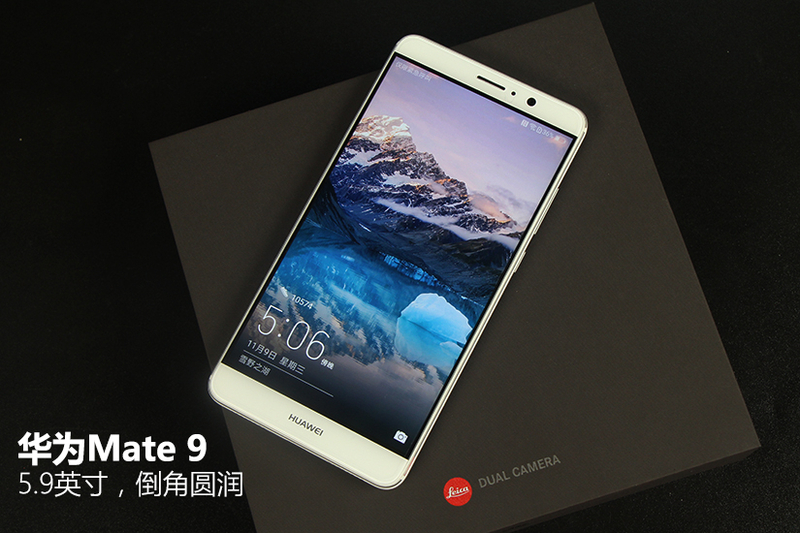
The front panel of Huawei Mate 9 adopts a 5.9-inch full HD screen. Although the difference is not large compared to the Mate 8's 6-inch screen, the overall size has been tightened, covering a layer of 2.5D glass, making the curvature of the glass edge transition In particular, the ceramic white version in the hands of the author, the perception is simple and clean. In addition, you can clearly feel that the chamfering of the whole machine is more rounded, and it is a bit more elegant than the toughness of Mate 8. This fine-tuning in size and detail has added a lot of grip to the whole machine, which is still very important for a 5.9-inch large-screen mobile phone.
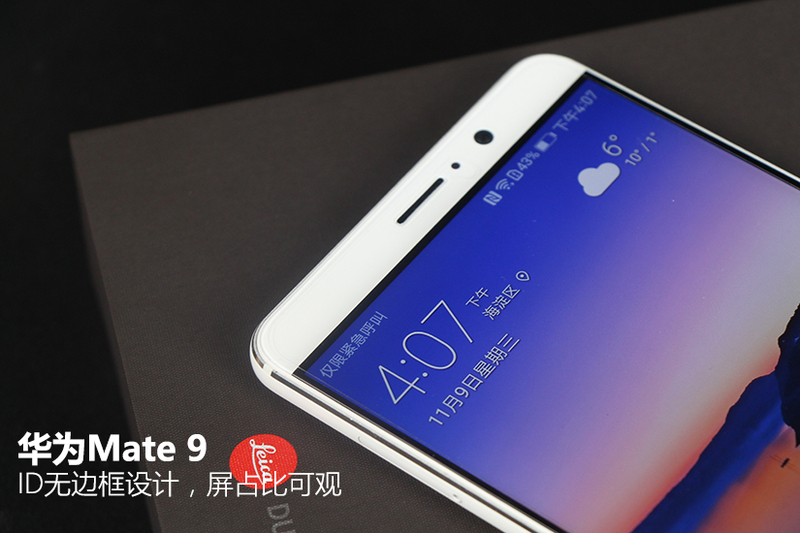
Huawei Mate 9 continues to reduce its area in the forehead and chin. The borders and the width of the upper and lower foreheads are well controlled. Therefore, Huawei Mate 9 still has a considerable screen share regardless of whether the screen is bright or on the screen.
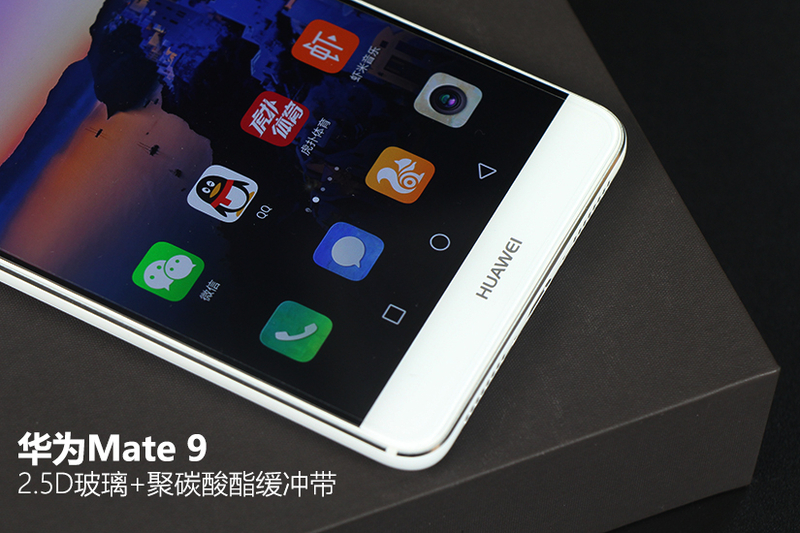
On the airframe side, Huawei Mate 9 chose a special magnesium alloy for processing, and provided a variety of textures and colors through different processing steps. Take the ceramic white in our hands as an example. Spray a pure and bright white coating on the metal surface to make the surface of the mobile phone display a ceramic-like texture and luster. With the back curve, the hand feels more gentle and comfortable. It is undeniable that Huawei's appearance has been freed from the shackles of the material itself, and it has become even more refined.
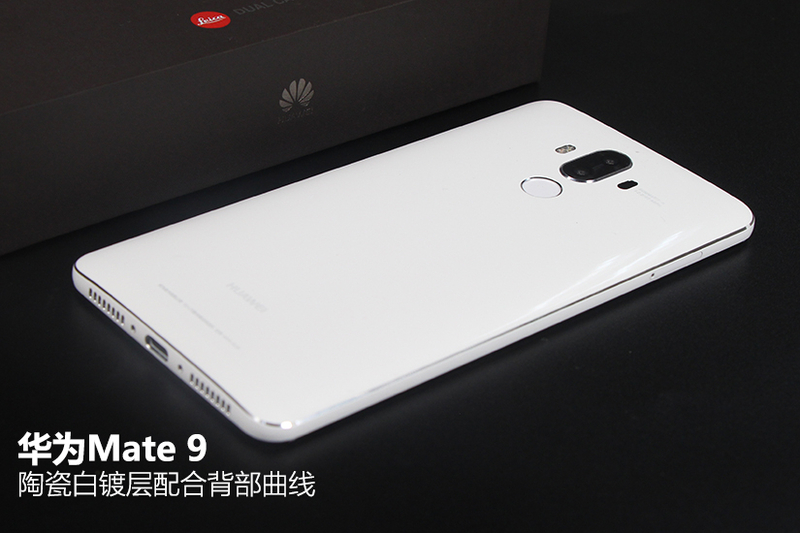
In terms of antenna design on the back, Huawei Mate 9 uses a nano-injection process + SMD process. The reason for this is that it has not adopted a complete nano-injection band treatment method, and more is still based on signal considerations. Taking the example at the top, Wi-Fi, Bluetooth, GPS, NFC, and other antennas are usually integrated. The Huawei Mate 9 has a relatively narrow forehead and poses higher requirements for the antenna design itself. Out of the microstrip antenna, it is difficult to ensure the best antenna efficiency, so Huawei Mate 9 chose a dual design solution and also tried to ensure the transition and color difference between the metal and the patch.
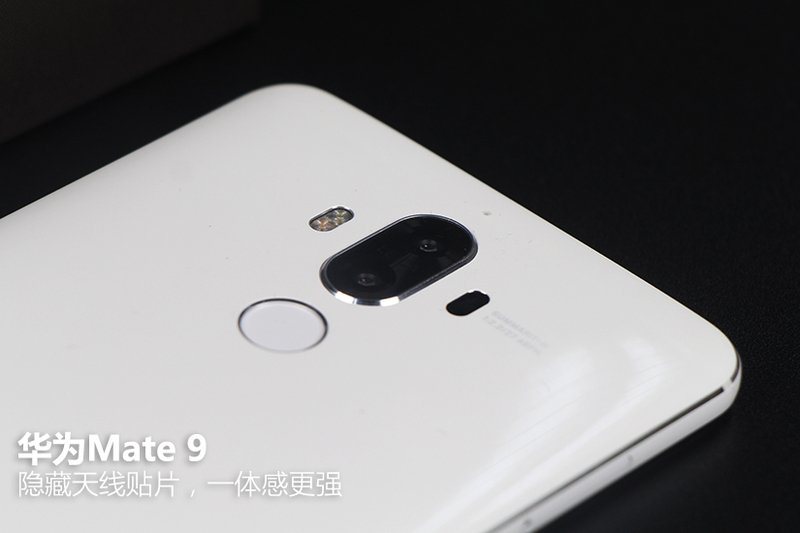
The ceramic white version in our hands hides the antenna patch because of the ceramic coating on the surface, making the back feel stronger. If you are concerned about the visual sliveriness of the metal and patch parts, the ceramic white version will be a better choice.
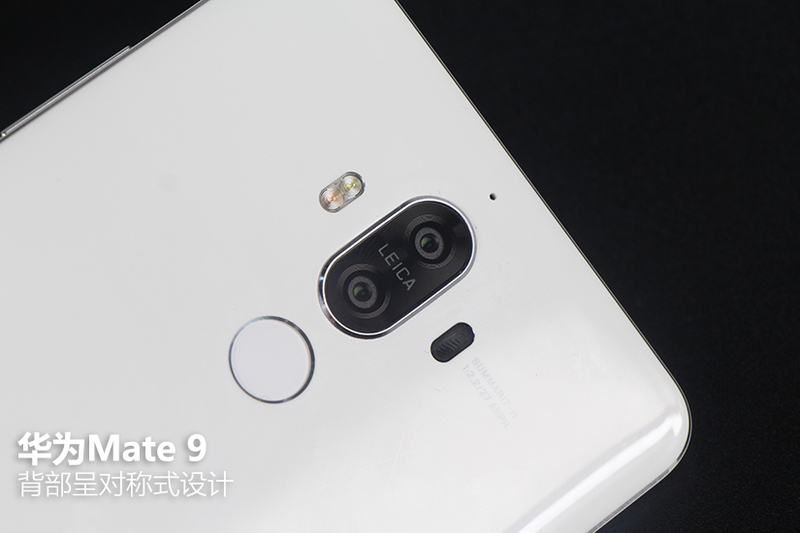
Huawei Mate 9 has a symmetric design on the back. It is equipped with a 12-megapixel color and 20-megapixel black-and-white twin-lens combination designed in collaboration with Leica. The two cameras are vertically arranged with a Leica logo printed on them and a dual-color flash and laser. Focus module, circular push fingerprint recognition.
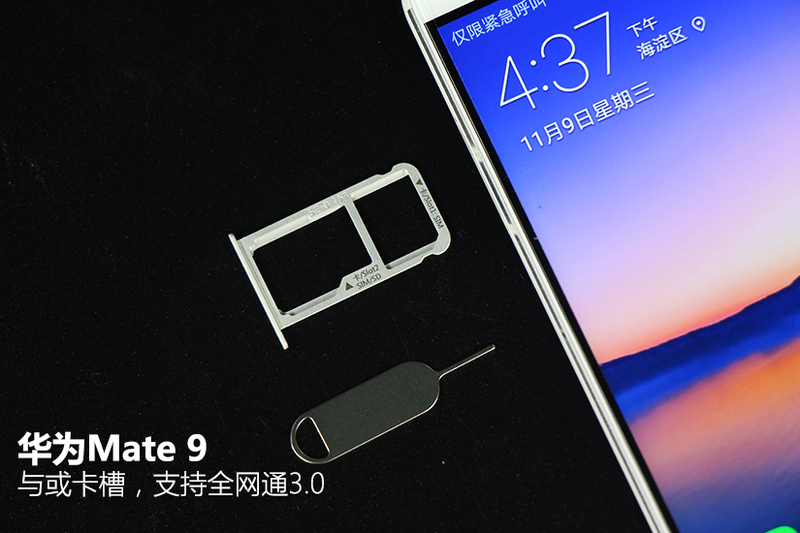
Thanks to the Kirin 960 SoC's further improvement of Netcom, Huawei Mate 9 supports Netcom 3.0, which means that the dual card slot can be blindly inserted without main and auxiliary points, and the secondary card perfectly supports Unicom's 3G network, so some GSM coverage is cancelled. In regions (such as Japan and South Korea), Huawei's Mate 9 deputy card can also conduct high-quality calls. It is worth mentioning that after two years of hard work, Huawei finally got rid of the baseband solution on the Kirin 960, and further improved its power consumption control, becoming a veritable Netcom.
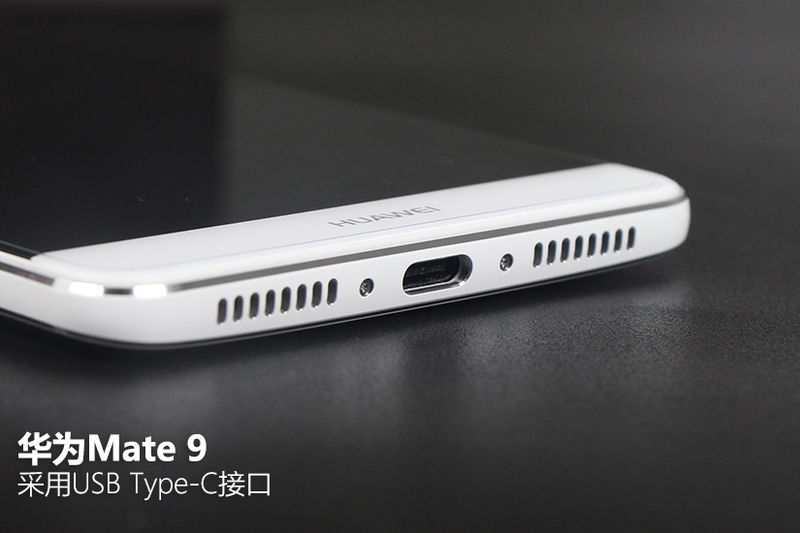
At the bottom, Huawei Mate 9 also uses a USB Type-C interface. It supports both positive and negative insertion and removal, and also adapts Huawei's super fast charging technology. Inputs of up to 5V/4.5A improve the charging efficiency. What's more, the whole machine actually hides 4 mics to achieve noise reduction and directional tunes.
Summary: Overall, Mate 9 continues the heritage of the Mate family of design languages ​​and refines the details without major changes in the overall design. The stable styling and rigorous workmanship are more consistent with the positioning of the Mate series of business users. However, frankly speaking, the three-generation products continue to use the three-stage design on the backside of the product will also produce some aesthetic fatigue to the user, and bring a certain sense of fragmentation in the material. So if you choose in several versions, we recommend buying the ceramic white version.
Hardware performance:
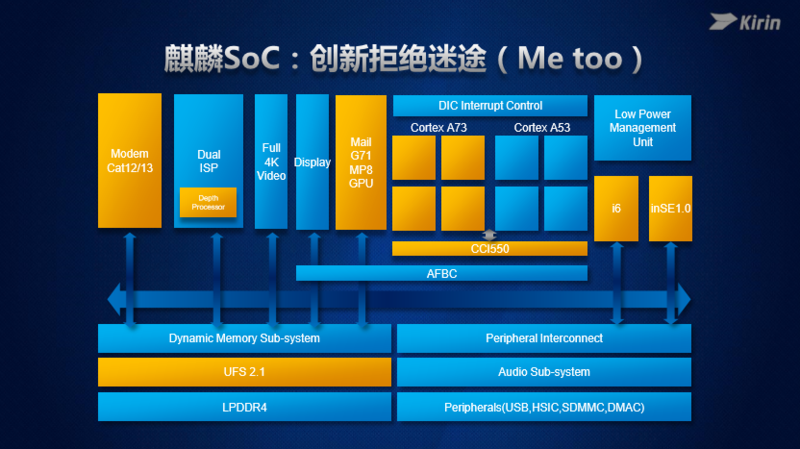
â–² Kirin 960 architecture diagram
The biggest highlight of the Mate 9 part in the hardware is the newly released SoC: Kirin 960. As the only terminal manufacturer in China that can research and develop SoC itself, every Kirin chip has received much attention. The Kirin 960 also became the first commercial processor of the ARM A73 architecture. It consists of four large core A73+ four small core A53s. The highest frequency is 2.4GHz, and the Mali-G71 MP8 GPU is standard. The i6 coprocessor is upgraded. The memory specifications were upgraded to UFS 2.1 and equipped with the second-generation PrimISP 2.0. Only from the component configuration has reached the top level of the industry. Therefore, after the release last month, it also caused a lot of discussion voice. Of course, the strength of the processor still needs the product to show. In this part of the article, we will use the actual test of Mate 9 to see what the performance of the Kirin 960 is.
The new A73 architecture

â–²A73 architecture
In the field of mobile SoC, the current flagship chips such as Snapdragon 820 and Apple A10 Fusion have all adopted the self-developed microarchitecture, and Kirin has been using the ARM public version of the architecture. The Kirin 960 uses ARM's latest A73 architecture, 16nm FinFEF+ process. In last year's Qilin 950, Huawei boldly chose the 16nm FinFEF+ process, becoming the first commercially available SoC using a 16nm process. In this year's selection, Huawei did not choose to advance 10nm, but still continues the 16nm process. In this regard, Huawei said that in the current range of commercially available mass production, 16nm still can guarantee the power consumption of the A73 architecture, and from a lateral perspective, the improvement of the architecture is more important than the process and architecture, and the current Node 10nm process volume production is not yet mature, so Kirin eventually choose 16nm.
In the official introduction, Cortex-A73 still uses full-size ARMv8-A architecture, up to 2.8GHz frequency, can use 10nm, 14/16nm process, and according to ARM official introduction, when A73 uses 10nm process, compared to the previous 16nm The A72 of the process has a 30% improvement in performance and is better optimized for AR/VR. The A73 is the smallest core processor in the ARMv8-A architecture, with an area of ​​0.65mm per core and continues to support the big.LITTLE architecture.
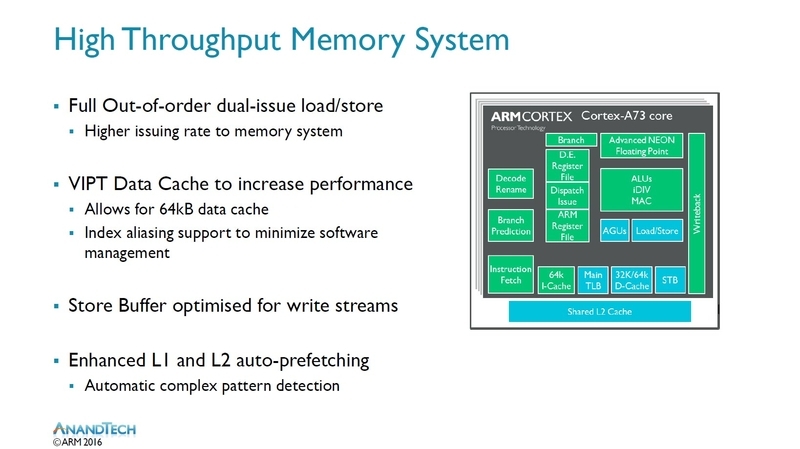
â–² Dual emission L/S unit
In addition, A73 and A72 in the architecture are also very different, A73 uses dual-emission L / S unit, in the launch width is less than the A72 of the three launches, but because the A73 processor's 11-core core pipeline depth than the A72's 15 The depth of the core pipeline is more streamlined, so the launch width does not have a decisive influence on the performance of the A73. However, since the A73's L1 cache is increased from 48kB to 64kB, the L2 cache is increased from the maximum 2MB of the A72 to 8MB, and an independent readout device is provided for the L1 cache and the L2 cache, making the A73 accessible to the theory. The maximum bandwidth value.
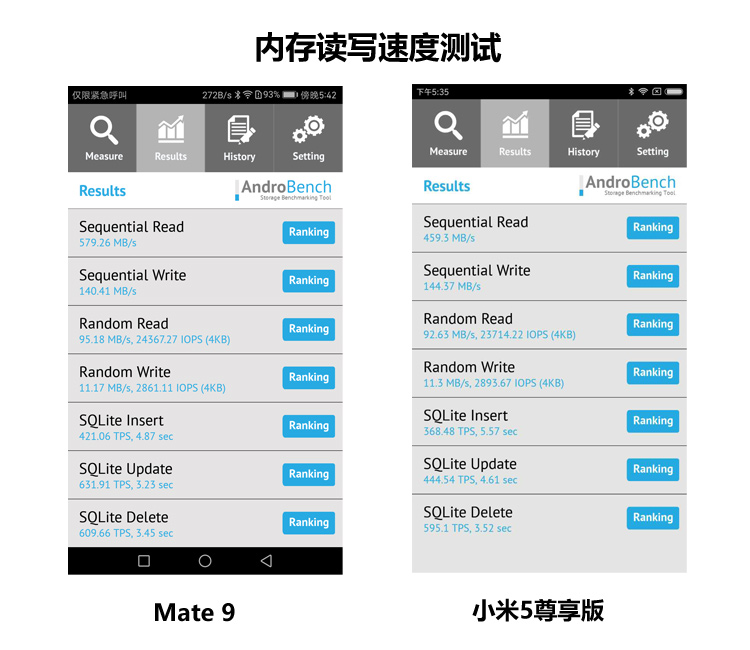
Thanks to various optimizations, the A73 has been improved in terms of extreme performance compared to the A72, and it supports UFS 2.1 memory specifications. This also makes the Kirin 960 more efficient in reading and writing data than before. In the Kirin 960's flash read/write test, continuous read/write speeds are much faster than the USF 2.0 used by the Xiaolong 820. However, in the experience, Mate 9 has significantly improved the speed of reading internal data of mobile phones, and it is very smooth in displaying complicated text images.
Industry-leading Modem
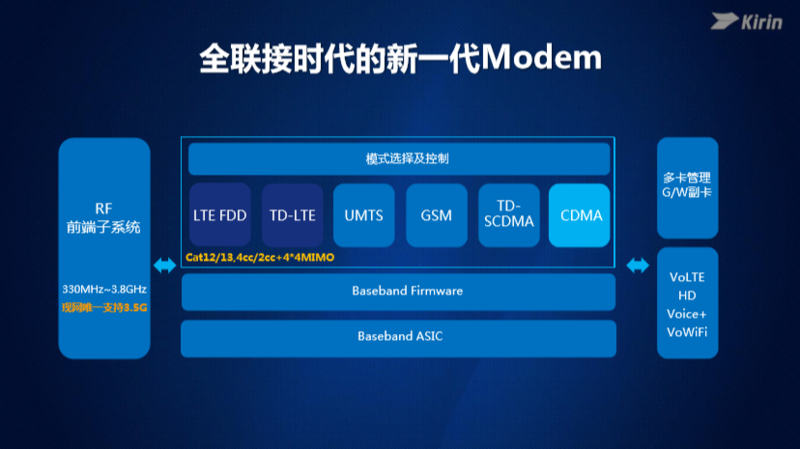
Communications has always been Huawei's most proud of its competitiveness, but the unexpectedly high unicorn on the Kirin 950 only supports CAT6 specifications. The competing products earlier this year also achieved CAT12 specifications, and the CDMA external baseband has also been criticized. . Therefore, a new self-developed full-mode Modem was integrated on the Unicorn 960, finally achieving a breakthrough in CDMA patents. The Unicorn 960 fully supports the 6 most frequently used in GSM/UMTS/CDMA/TD-SCDMA/TD-LTE/FDD-LTE. In the 330MHz-3.8GHz full-range mode, the Unicorn 960 also became the first chip in the Unicorn series to support the entire network. In terms of dual-card dual-standby, the Unicorn 960 supports dual-card combinations under various network standards such as 4G+2G, 4G+3G, and 4G+CDMA, which can also be supported in cases where some countries have already cancelled 2G networks.
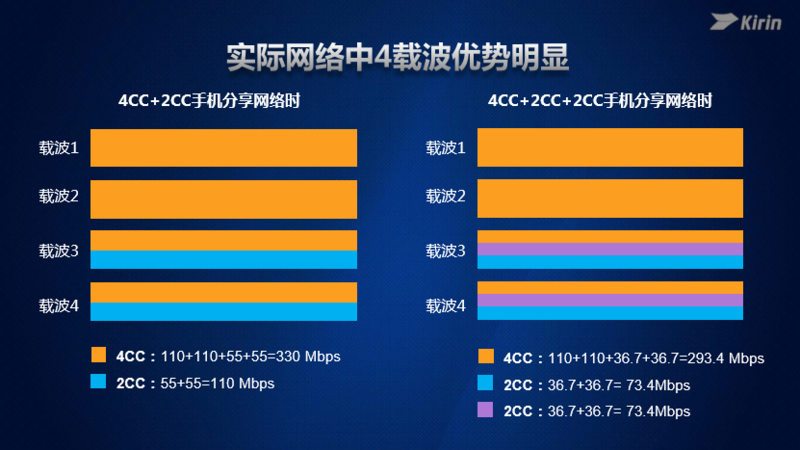
In terms of network connectivity, the Unicorn 960 supports 4CA or 2CA+4*4 MIMO, peak download speeds of up to 600Mbps, and upgrades the communication specifications to Cat12/Cat13, bringing new VoLTE voice technology to Yueyin 2.0, including: HD Voice , VoWifi (WeChat voice call), spectrum range expansion 100%, the sampling rate increased by 100%. The Kirin 960's intelligent voice enhancement technology, SPLC, can dynamically and intelligently compensate the user's voice, remove 50% of the noise and speech interruptions, reduce the sensation of rattle, and improve the voice call experience. In terms of theoretical performance, it is tied to the top level in the industry.
Super charge:
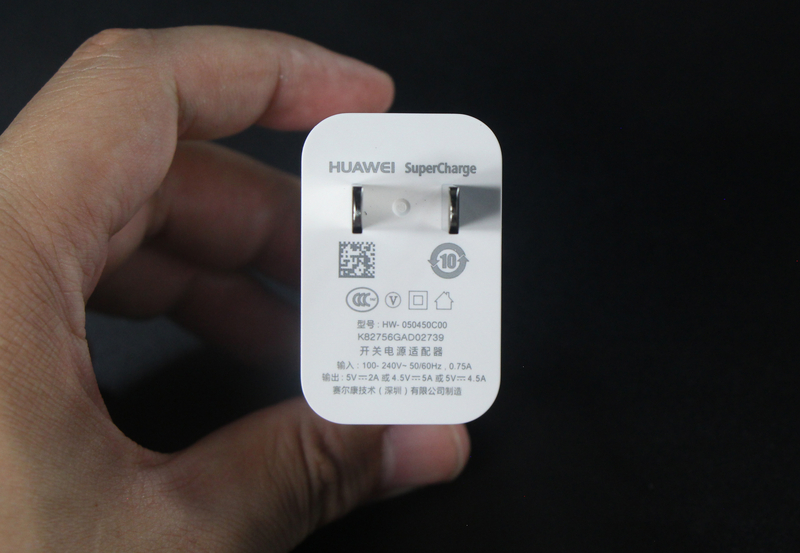
â–² Mate 9 Super Charge
For mobile phone fast charging, now has become the standard on high-end smart phones, so we also briefly explain the principle of fast charging here: fast charging is mainly through the purpose of increasing the charging power (power = current x voltage) to achieve rapid charging. At present, there are two main methods for fast charging, one is constant voltage and large current, and the other is constant current and large voltage. Since most mobile phones used Micro USB data interfaces before, the interface can withstand a maximum current of only 2A. Therefore, in order to ensure that the data line can be loaded with high current to achieve fast charging, it is necessary to use the original custom data cable and charging head. In order to reduce the trouble of customizing the interface, the industry generally adopts a fast charging method that increases the voltage.
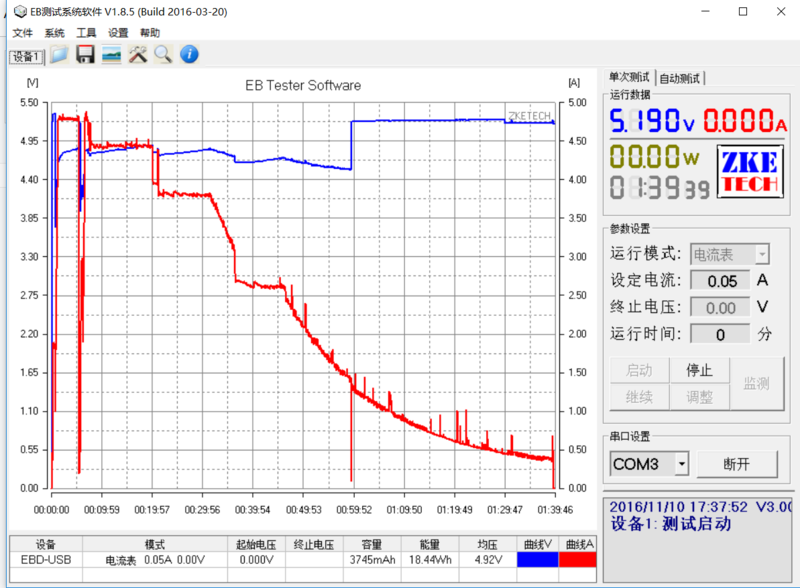
â–²Mate 9 charging curve (the second time is changed when starting up)
The ultra fast charge used by Huawei Mate 9 is the first constant voltage and high current method because the USB Type-C interface that is gradually applied to mobile phones can withstand a current much higher than 2 A. Therefore, Huawei Mate 9 is 5 A faster. The data cable does not need to be customized. Huawei Mate 9 supports 3.5V-5V/5A high-speed fast charging, and the maximum power is 22.5W. At the same time, dynamic voltage algorithm is also added to automatically adjust the optimal output value. As the charge time changes in different phases, the current is segmented. Drop control so that the battery can reach a good state of full saturation.
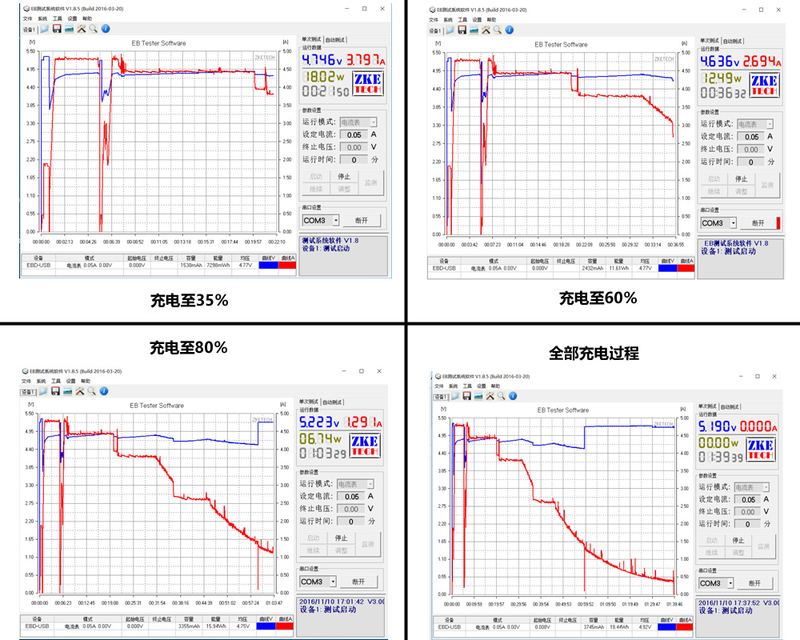
â–² Charging power adjustment at different stages
We also conducted a charge test on the Mate 9 (original charging kit). The Mate 9 was equipped with a 4000mAh battery. The entire charging time was 1 hour and 40 minutes. After the handshake protocol was recognized, the Mate 9 was able to reach approximately 4.8V/4.5A in the early stage. 22W of power, then about 30% of the charge can be charged to about 20 minutes, the power is adjusted to 4.7V/3.7A about 18W, adjust the current gradually down in about 30 minutes, in 36 minutes (charged to 60%) down to 4.6 V / 2.6A about 12.5W, 1 hour can be charged to 80%, the current dropped further, enter the 5V1A trickle charge link. On the whole, Huawei's Mate 9 charging speed is currently at the top level, and it is compatible with the previous-generation 9V2A specifications and supports the PD protocol. Huawei's Mate 9 uses low-impedance design from the charger to the battery. The internal body also has eight layers of heat dissipation structure, and it maintains a relatively good temperature during the power-on process.
When G71 meets Vulkan
The Kirin 960 uses the latest generation of GPUs from ARM: Mali G71, using the Bifrost architecture. The Mali G71 clocked at 850MHz. In the official results, based on the 16nm process, Mali G71 has a fill rate of 27.2Gpix/s pixels and a triangle fill rate of 850Mtri/s (based on 32 cores), compared to the T880 pixel fill rate. Doubled, but the triangle generation rate is only 1/2 the previous. For the control of power consumption and chip size, the Kirin 960 uses the Mali G71 MP8 (of course it is impossible to use 32 cores). In the GFXBench4 test, the 1080P Manhattan off-screen score was 37 Fps, and the 1080P Tyrant Dragon off screen 75 Fps. Finally in this generation, the Kirin 960 graphics processor has been greatly improved.
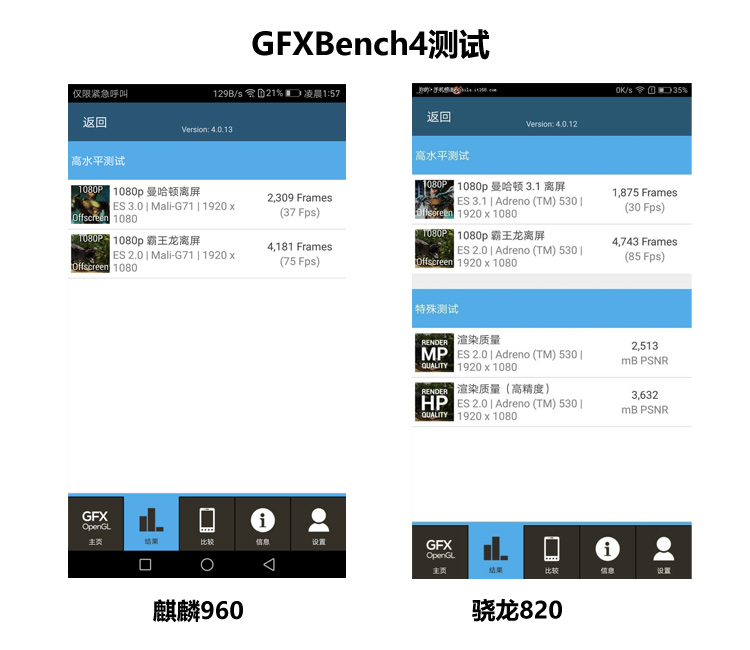
In addition, the Mali G71 supports the Vulkan interface standard while supporting OpenGL and other APIs. Most of the 3D games have been interacting through the OpenGL standard. However, due to its birth in the 1990s, OpenGL is now quite old, and the utilization efficiency of multi-core processors on the market is low, and the efficiency of graphics processing is very high. It is relatively low and cannot completely release the GPU's strength. There is a kind of big horse-drawn car feeling. Therefore, on the Kirin 960, the first full support for the next generation graphics API specification: Vulkan. Compared to OpenGL, Vulkan improves multi-threaded performance, rendering performance faster, get rid of the OpenGL rely on CPU computing methods, so that without copying data between the GPU and CPU in advance, the same memory under the same read and write, give full play to the multi-core processor Parallel computing capabilities.
Smarter coprocessors:
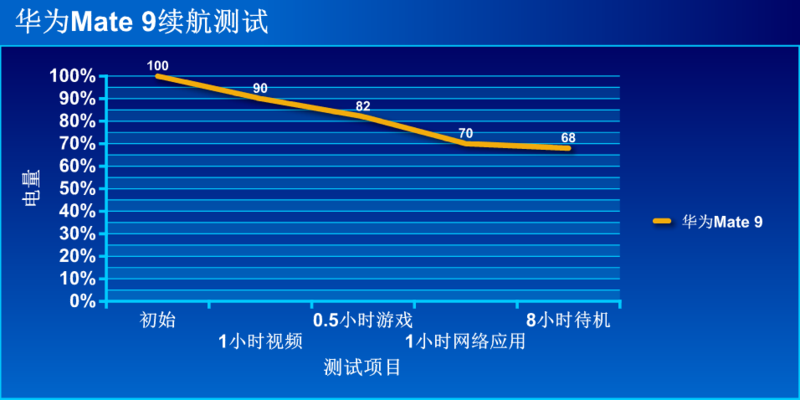
â–² Mate 9 endurance special test
On the Unicorn 960, an i6 coprocessor is also used to reduce the power consumption of the CPU. The i6 shares resources with the A73 and A53, and independently takes over the lightweight tasks when the mobile phone is sleeping, but consumes only 1% of the power consumption. Compared with i5, in a typical PDR service, power consumption is reduced by 75%, and pedometer service is reduced by 40%. And i6's fusion operations include high-precision fences, situational awareness, low-power GPS positioning, low-power multi-base station positioning, low-power navigation, and AOD (On Screen On) functions. Such changes also make it possible to run some LBS-based AR class applications (Pokeman Go) in the future to reduce power consumption by 70%.
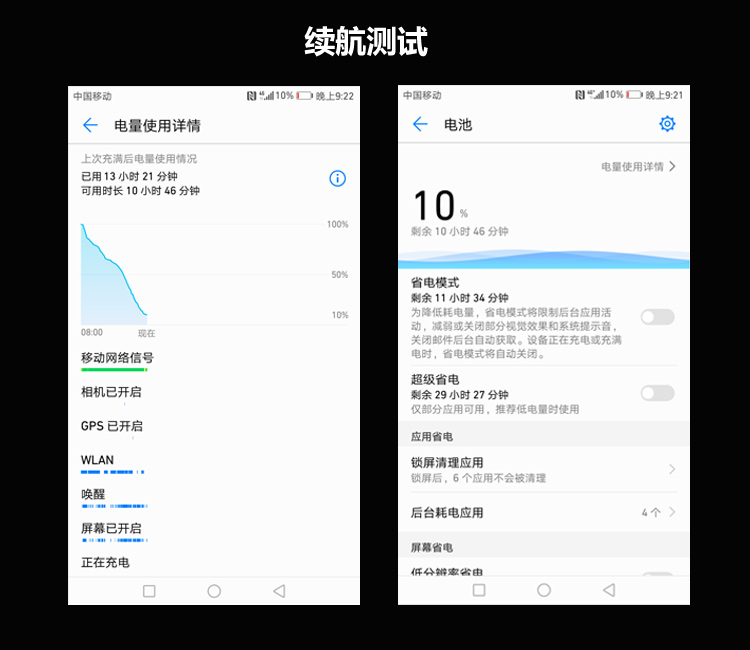
We also conducted a battery life test on Mate 9: During normal use of the Mate 9, Mate 9 went out from 100% in the morning to the remaining 10% and insisted on 13 hours and 21 minutes. This result was a smart phone experience with a 4,000-inch screen with a 4000mAh battery. Really good, this mainly depends on the EMUI to have strict requirements for the constant detection and permission control of the power consumption application running in the background of the system. In the dedicated test, Mate 9's level of 10% power consumption for local video playback in one hour is also consistent with the iPhone 6S Plus.
Finally used the CCI 500
In the previous architecture diagram, we can see that in the DIC Interrupt Control area, the CCI 500 that was released at the time of A72 is finally used. In the introduction of the Kirin 950, we have already introduced this. In fact, the biggest change in the CoreLink CCI-500 is the addition of a “Snoop Filter†so that the snoop control is no longer confined to a single cluster. Between the internal CPUs, all CPU cores are allowed to be scheduled at the same time. This reduces the workload of the processor to perform cached queries and is more efficient. I believe that everyone has heard of the so-called “one-core hardships, other onlookersâ€. It is because of the low efficiency of cooperation between clusters and clusters in the previous processor. Compared with the CCi 400 in the previous Unicorn 950, the memory connectivity is not enough, and the bandwidth bus is also limited (CCi 400 maximum support 12.8G/s, CCi 500 theory up to 25.6G/s). Therefore, on the memory bandwidth score, the Kirin 960 has a nearly one-fold increase compared to the 950.
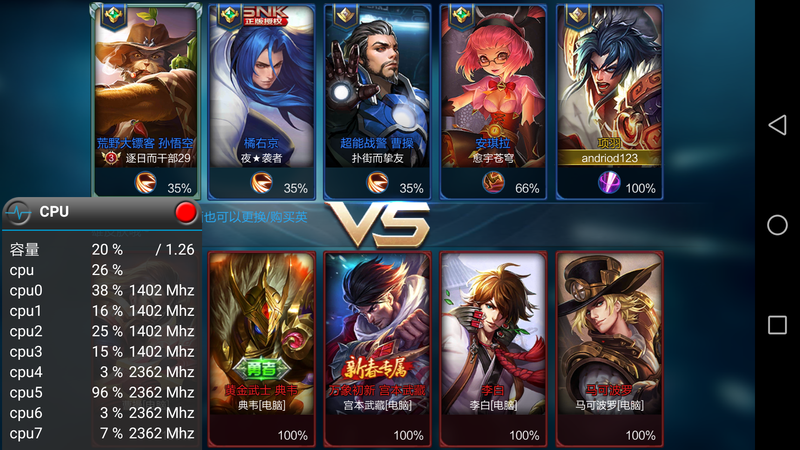
â–² When the game is loaded
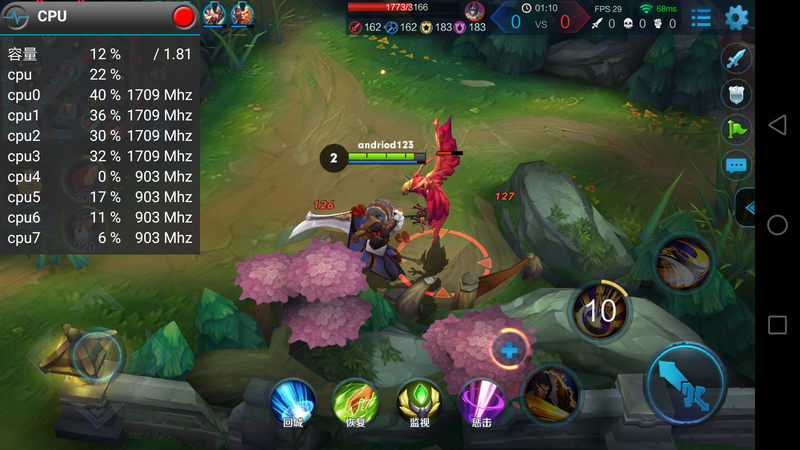
â–² small nuclear
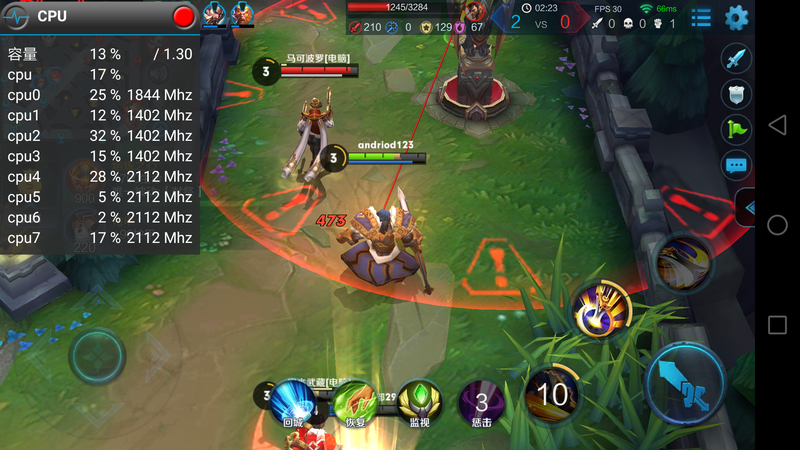
â–² Large nuclear work
Finally, we also simply tested the game performance of the Kirin 960. In testing the 300M large-scale game "Glory to the Kings", we used PerfMon to conduct tests. After entering the game, the CPU is mobilized with eight cores. After entering the game, most of the time, it basically enters four small cores. As a supplementary mode, when switching to large cores for operations such as group fight/release skills, etc., they switch to large cores to perform operations. The small cores are down-converted, and the entire 30-minute game is played with Fps between 28 and 30, which is stable and smooth. There will be no scene of "one nuclear hardship, seven nuclear onlookers".
Summary: After upgrading the new architecture and completing the previous shortcomings, Kirin 960 has finally reached the first tier of commercial SoCs. In terms of key components, both CPUs and GPUs have been significantly improved over previous generations of products. This is also an affirmation for Huawei's unremittingly long-term strategy of researching and developing SoCs. Performance indicators of some key components have been improved. In order to catch up, no part of the entire Kirin 960 has become obvious shortcomings, and on the basis of a balanced, can use its advantages in close integration with the terminal to further improve the actual needs of users. From the author's point of view, the more significant significance of Kirin 960 is that at the outset, Huawei became the first terminal manufacturer to vertically and completely cover the entire SoC component. This killer makes it unnecessary to cope with the increasingly transparent supply chain environment. Huawei, which is controlled by others, has the advantage that other manufacturers can hardly reach in terms of product control and innovation.
EMUI 5.0 experience: no longer use more cards
Huawei Mate 9 runs a deep customization based on Android 7.0 EMUI 5.0, this is the first release of the EMUI 5.0 system. As a large-scale version iteration, what exactly has changed in the EMUI 5.0 series, and what kind of improvement has been experienced in the experience? In this section, we simply interpret the new EMUI 5.0 for everyone.
Newly designed interface:
EMUI has evolved and has formed its own style in design. It also cultivates the user's fixed aesthetic and operational logic. Therefore, the design change of EMUI 5.0 is more reasonable and integrates with the current fashion trends, and is based on the previous foundation. Extend above. From the interface point of view, the design of EMUI 5.0 is more simple and natural, with white and sober blue as the main colors. The system icons have also been redrawn, and bright colors are used for filling. Compared with the past, the EMUI 5.0 is filled The business style is more smart and lively.
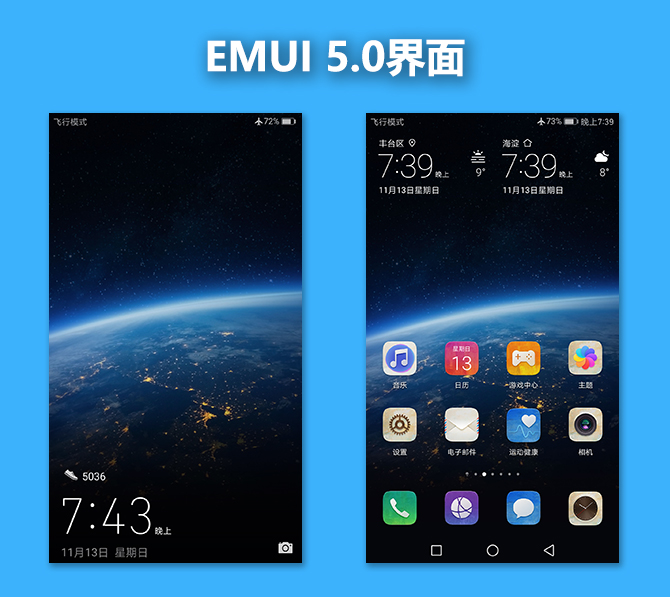
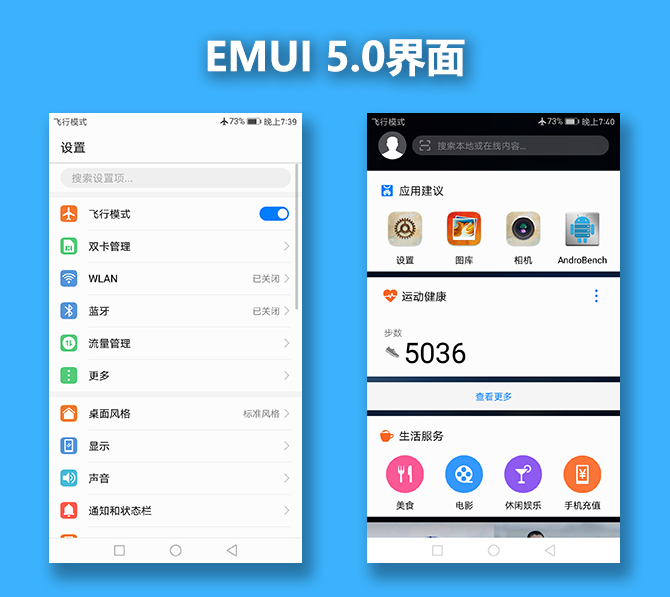
This design inspiration comes from the marine civilization of the Aegean Sea and hopes to integrate the smooth and smart water into the system. Especially in terms of dynamic effects, EMIUI 5.0 collects inspiration from marine elements such as bubbles and jellyfish, making the dynamic effects of charging, photographing, recording and other functional operations more dynamic and natural. And EMUI 5.0 simplifies the interface and content presentation, so that 90% of common operations can be completed within 3 steps, and the operation is more handy.
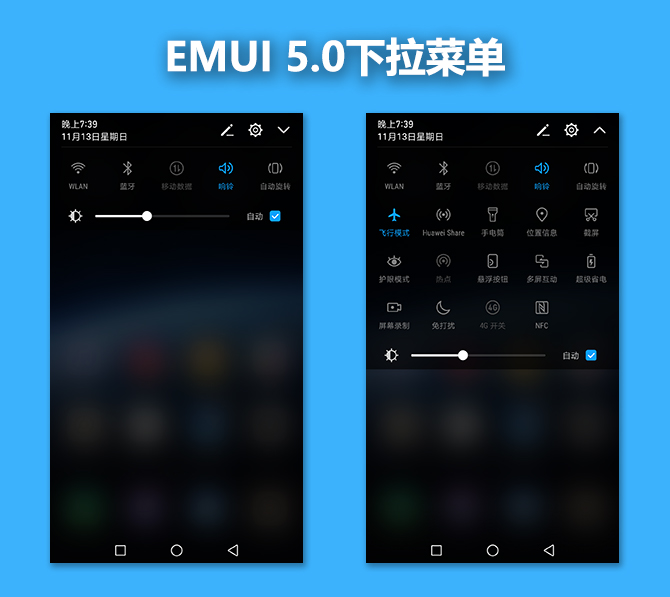
Integrate Artificial Intelligence Technology
In addition to optimization of interface design, Huawei pays more attention to deep-level system-level changes. Through the optimization of the bottom layer, users can inadvertently obtain a better experience. EMUI 5.0 will focus its efforts on solving the Android system's Caton, and the slower it will be. Stubborn disease, based on artificial intelligence technology development, optimizes the Android system for the rationality of resource scheduling, and relies on the innate advantages of hardware and software combination (EMUI + Kirin 960 SOC), enabling users to receive timely and responsive response and smooth experience.
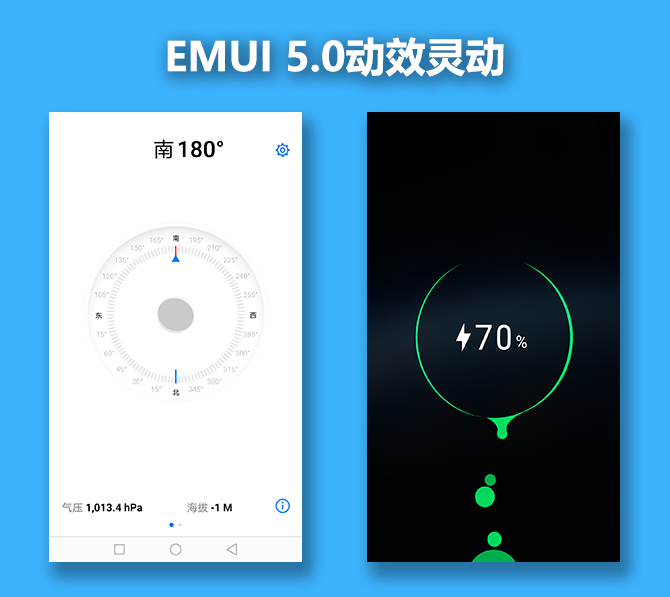
Specifically, it is mainly reflected in four corresponding measures. The first is the intelligent perception learning system. Based on the artificial intelligence technology, the system will continuously learn the user's usage habits during the process of using the mobile phone. These habits are various, including the frequency and preference of the user to use the application, the order of using the application, etc. . Of course, the longer the usage time is, the more habitual the system is to acquire, and the more knowledgeable the actual users are, provide a reliable basis for the next resource allocation and scheduling.
The second is intelligent behavior prediction. As mentioned above, based on learned habits, the system can intelligently predict the application of users at different times and scenarios to be used in advance to prepare resources in advance. For example, beauty-conscious girls are accustomed to taking beautiful photos after self-photographing. After the system acquires this habit, it will advance the camera's self-timer and advance Mito's software into memory for preparation. This will allow subsequent Mito software to switch smoothly and quickly.
Furthermore, intelligent resource scheduling allows the system to detect the resource requirements of applications in a timely manner. According to differences in application attributes and learned user habits, real-time dynamic scheduling of CPU, GPU, storage, and other system resources on-demand enables all types of applications to be available. The best resource allocation. For some applications that are commonly used by users, they will get higher priority, and even store them directly in memory. Generally speaking, these applications are always placed in the most convenient position of the system, which is convenient to call and extremely efficient.
Finally, the optimization of the core components of the Android system, this part involves two aspects, on the one hand is the Kirin SoC for Android 7.0 (domestic starter) in-depth optimization, on the other hand is EMUI for the file system (change to F2FS), database engine, graphics The optimization of the rendering engine and the like, and the dynamic memory compression mechanism is enabled. The background application uses memory to quickly reclaim and takes the lead to ensure that the foreground application is used, making the resources always used reasonably and ensuring a smooth experience.
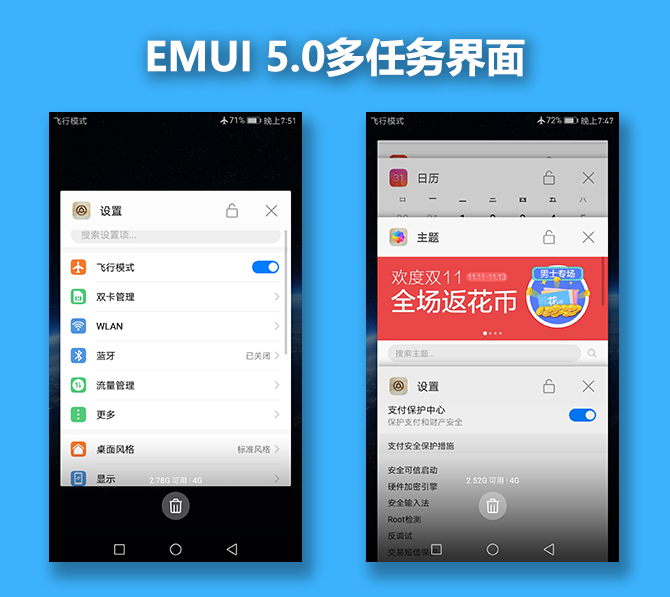
Based on these optimizations, Huawei's Mate 9 uses LPDDR4 running memory and UFS 2.1 storage. In terms of actual experience, the smoothness of EMUI 5.0 really impressed the author. In the trend that many domestic ROMs are attracting attention through the development of fresh functions, EMUI 5.0 can sink down and cultivate internal strength, which is indeed commendable. As to whether it can do 18 months (more than one product cycle), it will be verified later.
Continuous improvement
The functions of EMUI 5.0 have also been improved. Because Huawei Mate 9 has four mics built in, it can better identify the location of the sound. The Huawei Mate 9 also updated a new recorder for this hardware advantage. During recording, you can recognize the sound coming from different directions and selectively filter out the useless sound source, making the final recording better.
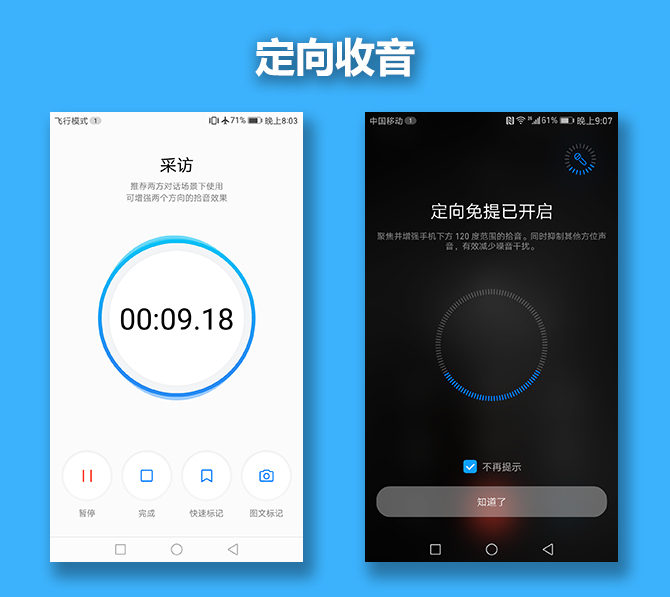
Today, when security is repeatedly emphasized, the privacy space is also focused on creating. The system has its own independent main space and privacy space. It can directly enter a specific space through a preset fingerprint. The two spatial data do not interfere with each other and are independent of each other. Users can hide private applications or files in the privacy space. Even if other people use the mobile phone, they can't snoop on them without a corresponding fingerprint or password.
In addition, EMUI 5.0 supports WeChat and QQ applications, that is, users can use the same mobile phone to log in multiple accounts at the same time, and the data between multiple applications does not affect each other and can be run at the same time. This design resolves one person's multiple accounts and can better switch identities in working and living situations to meet the social needs of users.
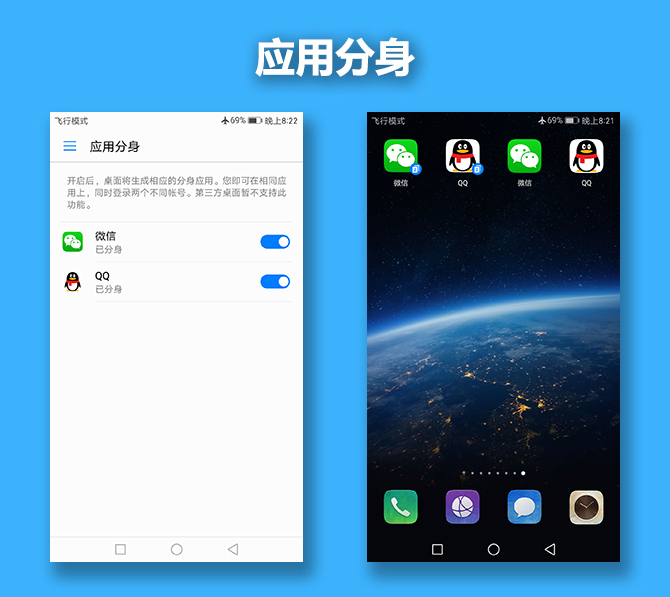
Summary: Overall, EMUI 5.0 has been improved in many aspects, and it is very characteristic in the smooth experience of the system. It is worth noting that the iterations of EMUI and Kirin SoC in the past two years have kept pace. It can be seen that Huawei seems to strengthen the integration between the two. This continuous integration of software and hardware has become the key to continuously improving the user experience. EMUI even Huawei's biggest advantage.
Photo experience: How is the second-generation Leica dual camera?
This time, Huawei and Leica are further collaborating on the Mate 9, which is equipped with a second-generation Leica dual-camera imaging system. The color main camera is a 12-megapixel Sony IMX 286 sensor, and the black and white secondary camera is upgraded to 20 million pixels. And the main camera supports OIS optical image stabilization, equipped with four kinds of focusing methods, under the coordination of the new ISP image processing chip, the imaging level is undoubtedly more exciting.
I picked up the key points of the three camera parameters to help everyone interpret. First of all, the pixel of the black and white camera is greatly improved. The higher pixel means more detail, making the picture more delicate. In addition, the pixels of the primary and secondary cameras are asymmetrical, but the focal lengths of the two are the same, and the extra pixels of the black-and-white camera also contribute to the subsequent dual-camera zooming.
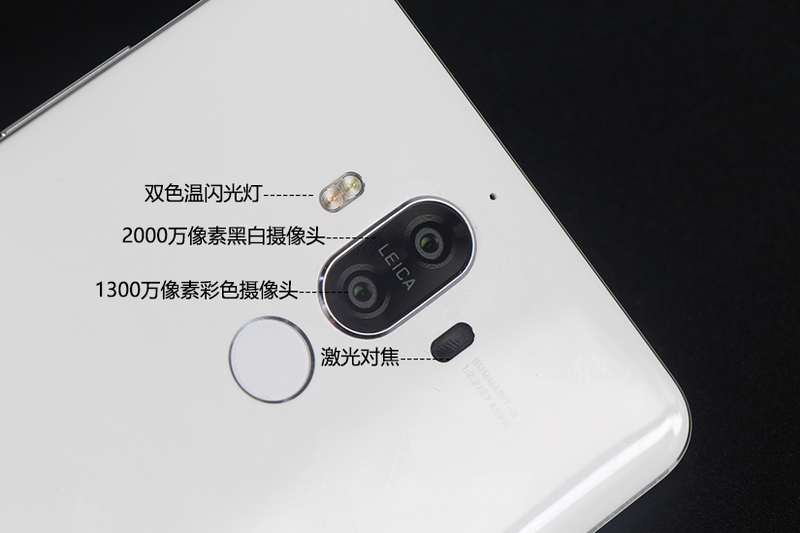
Followed by the addition of laser focus, Mate 9 can simultaneously support phase focus, laser focus, depth focus (triangulation ranging focus) and contrast focus, according to different scenes reasonable choice of focus mode, compared to the first generation of Leica dual camera focus speed increased 30%.
Finally, the improvement of the ISP image processing chip, this ISP directly enhances the processing performance by 125%. It directly enhances the focus, white balance, and high dynamic contrast adjustment capabilities, resulting in higher picture tolerance. For the blurring mode of the large aperture, this ISP's depth-of-field information calculation is more accurate and rapid, making the photo edge blur more accurate and the photo layering stronger. Here we will help you to learn more about Huawei's Mate 9 imaging standard through sample sheets.
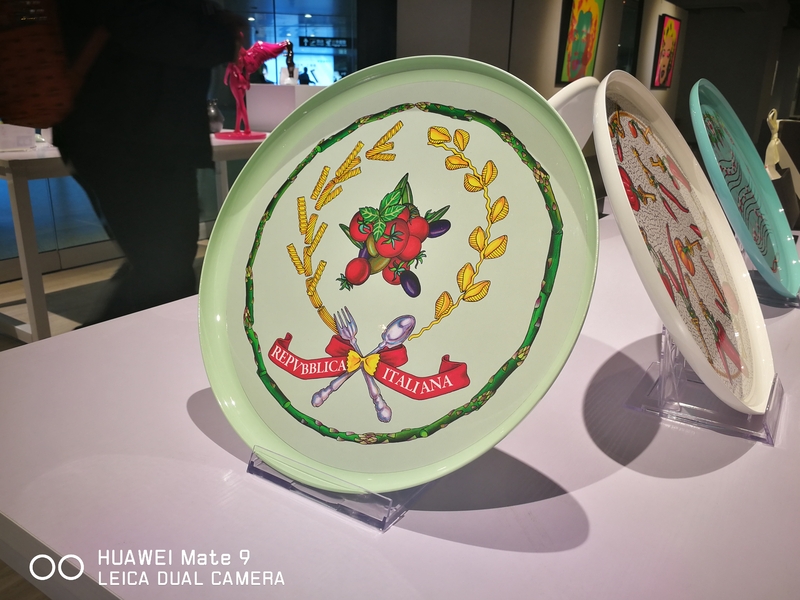
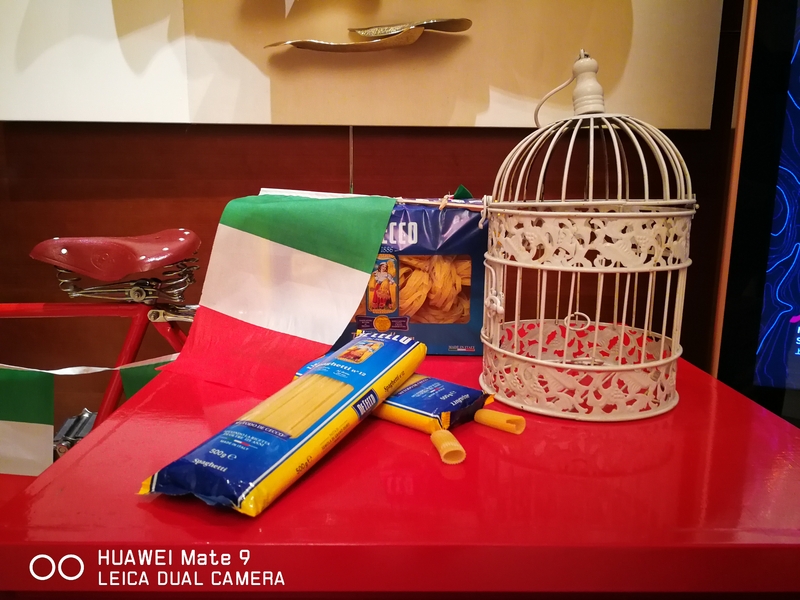
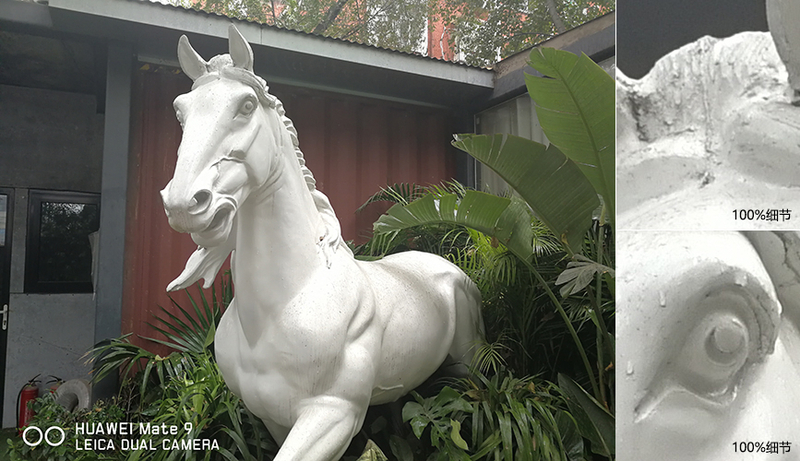
In terms of color, Mate 9 is involved in tuning from the bottom of the chip by Leica. The overall style tends to be bright, the saturation of colors is high, and there is a certain degree of German taste. At first glance, it is easy to be attracted. In terms of details, due to Huawei's Mate 9's 12 million pixels, the exposure has a good control, making the white water droplets and gutters clearly visible.
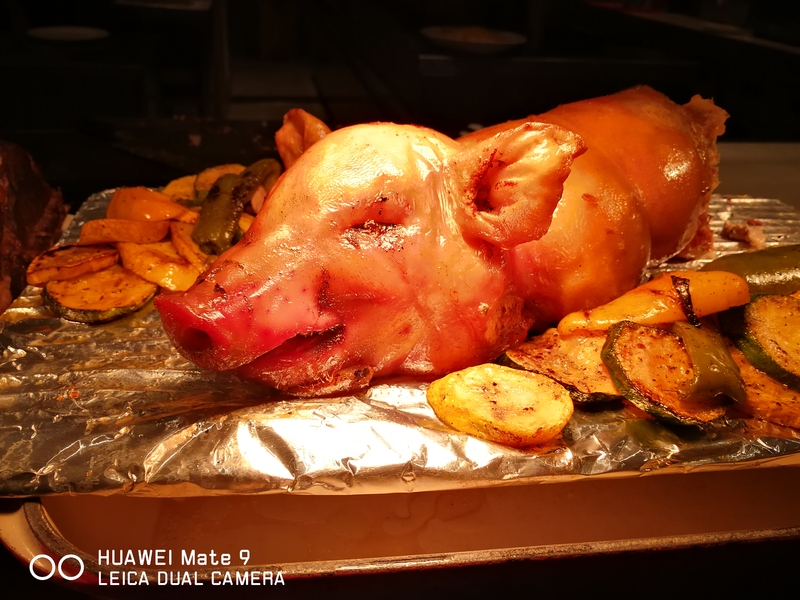
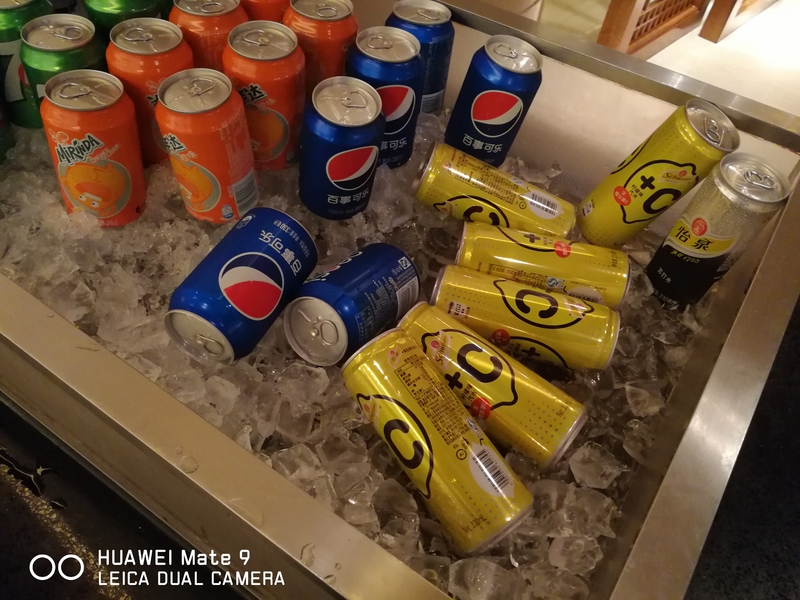
Based on this powerful ISP, the picture has more accurate color shading, and there is no loss of shadow details due to high contrast of light, and the processing of sunlight and shadow is very natural.
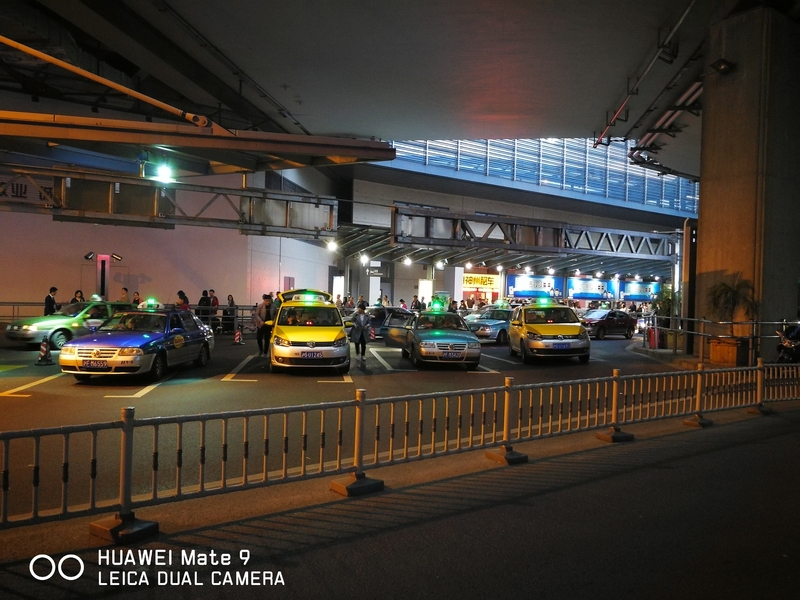
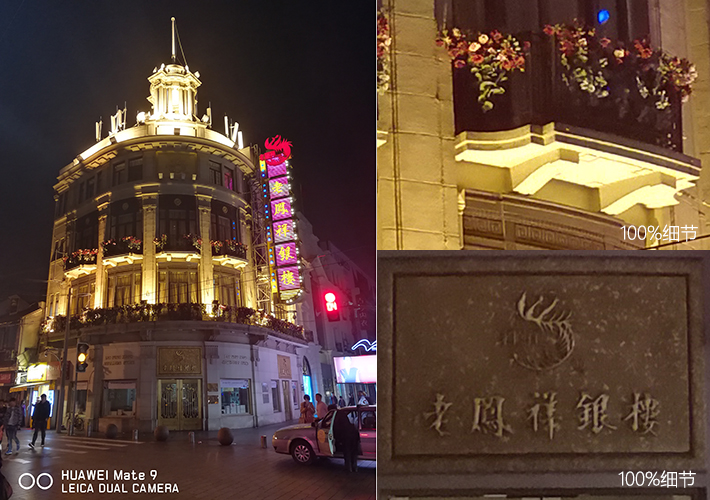
In terms of dim light, Mate 9's performance is very impressive. The main camera relies on optical image stabilization to achieve good performance. The black and white sub camera does not have a filter, and the amount of light is larger to ensure the brightness of the screen, and the high pixels also allow more details to be retained, effectively improving the quality of night pictures. From the point of view of the proofs, Mate 9 has a good control of the noise while ensuring the brightness of the screen. Leica's standard high-quality mirrors are also very good at controlling glare.
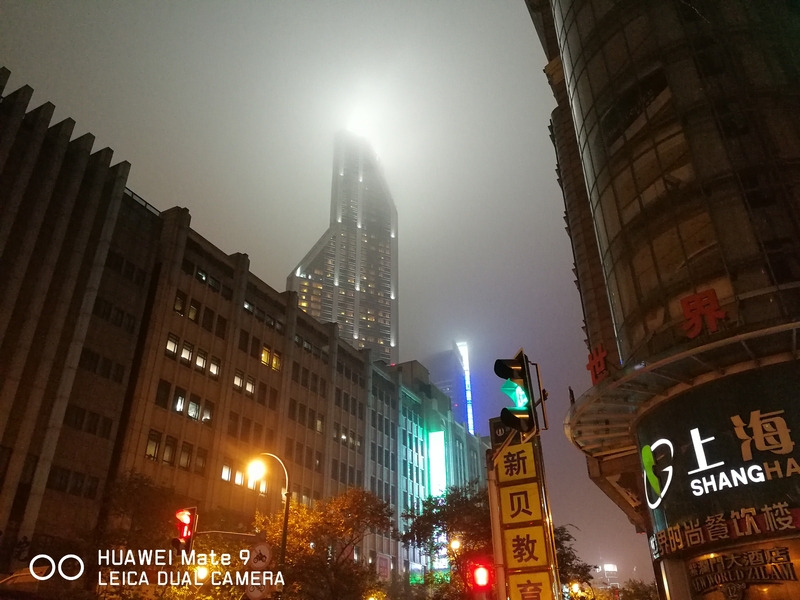
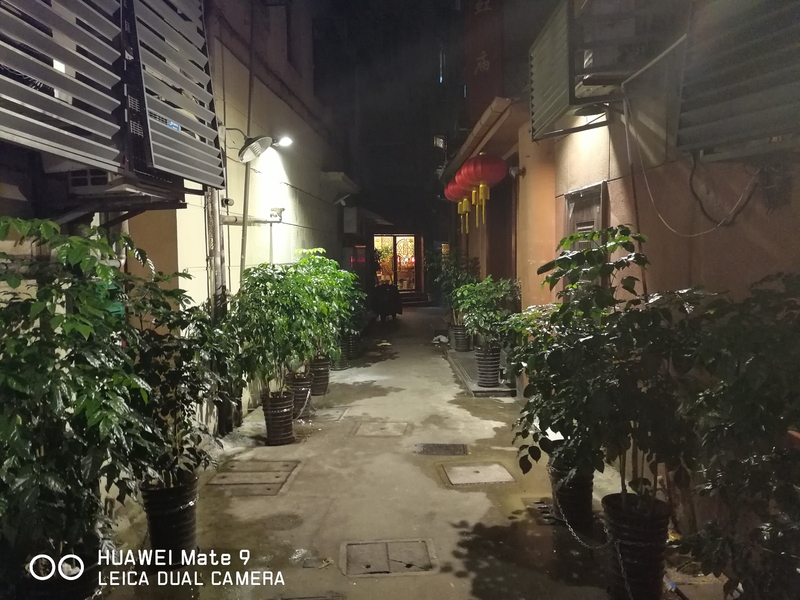
In addition, the night shooting also tests the focus ability of a mobile phone, after all, such as contrast, phase and other focusing methods have certain requirements for light conditions, night focus is likely to repeatedly pull the bellows situation, the process dragged. Mate 9 can support four focus modes at the same time, according to the intelligent selection of light environment, in which laser focus due to its active light-emitting distance measurement principle, the light requirements are not harsh, so effectively improve the night shooting focus experience.
In addition to the significant increase in daily imaging, the second-generation Leica dual imaging system also supports 2x dual camera zoom. We also give a brief analysis of the two-color principle on Mate 9: Since the focal length of the color + black and white camera is the same, the picture obtained by the two is not much different, and the black and white sensor has a higher 20 million pixels, which can also be adopted. It carries out 10 million pixel crops to obtain a 2x zoom effect, and then synthesizes the corresponding parts (the theory should be 6 million pixels of color information) obtained by the color sensor, and synthesizes and outputs 12 million-pixel pictures through an interpolation algorithm. .
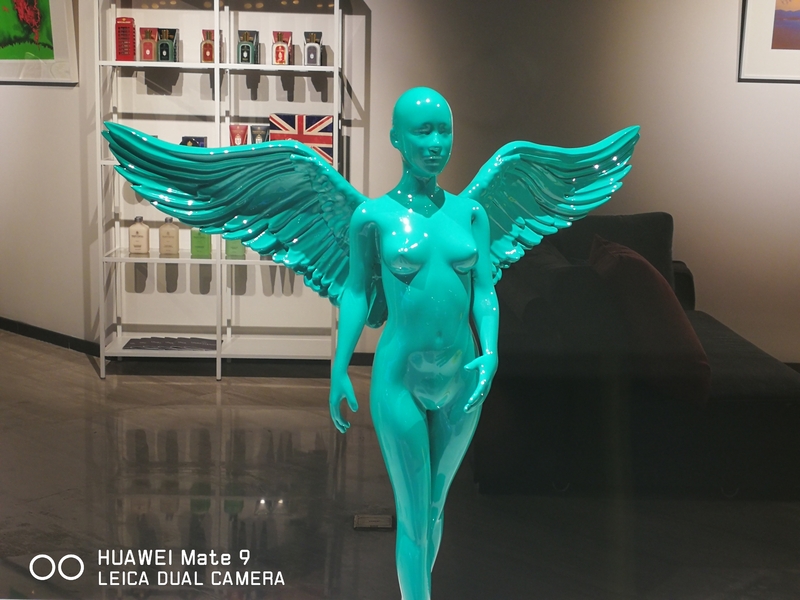
â–² 2x dual camera zoom
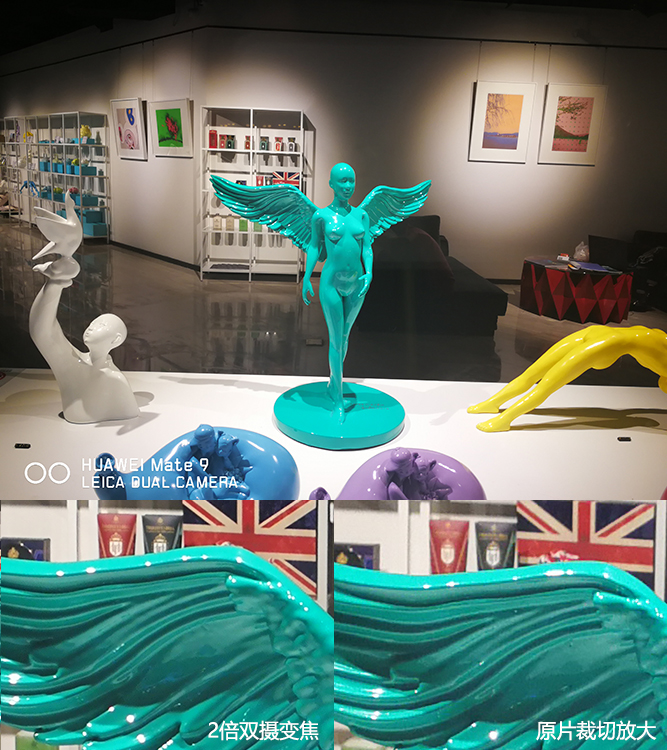
Judging from the final rendering effect, the 2x double camera zoom does have a good resolving power, and the purity of the screen has obviously improved compared to the original film cutting.
In addition, the second-generation Leica dual-camera imaging system further enhances the large aperture defocusing. The ISP's depth-of-field information calculation is more accurate and faster, making the photo edge blur more accurate and the photo layering stronger. Look at the proof below.
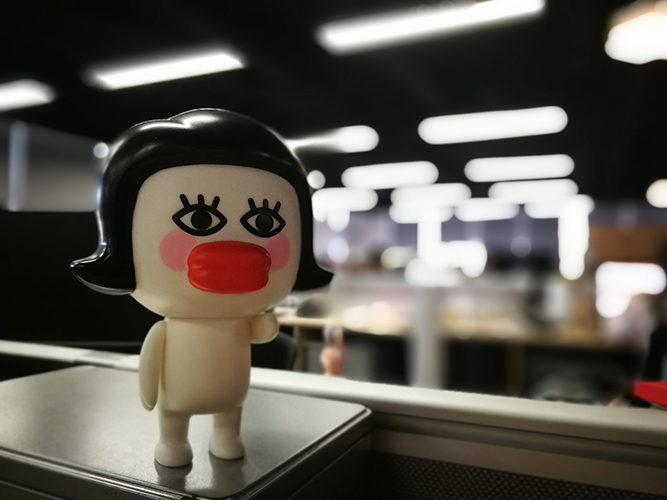
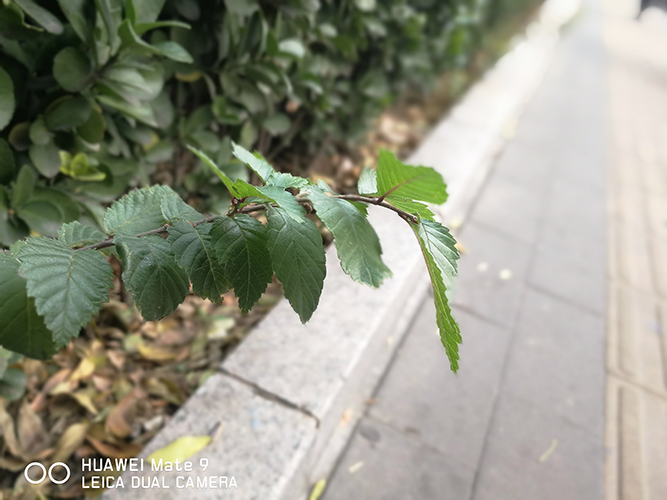
Overall, through in-depth cooperation with Leica, Huawei's Mate 9's performance in the camera further, once again consolidates Huawei's leading position in the flagship mobile imaging.
Summing up: The popularity of the Internet on the Internet a few years ago has gradually dissipated. At the same time, the "cost-effectiveness" has brought about a large number of terminal equipment shipments. On the other hand, it has unintentionally caused the negative impact of low product profitability and low brand added value. Thus we can see that this year, all brands have gradually moved to the mid-to-high-end mobile phone market, gradually increasing the average value of domestic mobile phones. In this regard, Huawei's Mate series earlier layout has created a certain product inherent image in the market today, compared to other domestic brands, Huawei has already won at the starting line. On the other hand, the Qian County plan has allowed Huawei to continue to sink its public retail channels, further strengthen its channel management and control capabilities, and form a complete sales system covering various user groups.
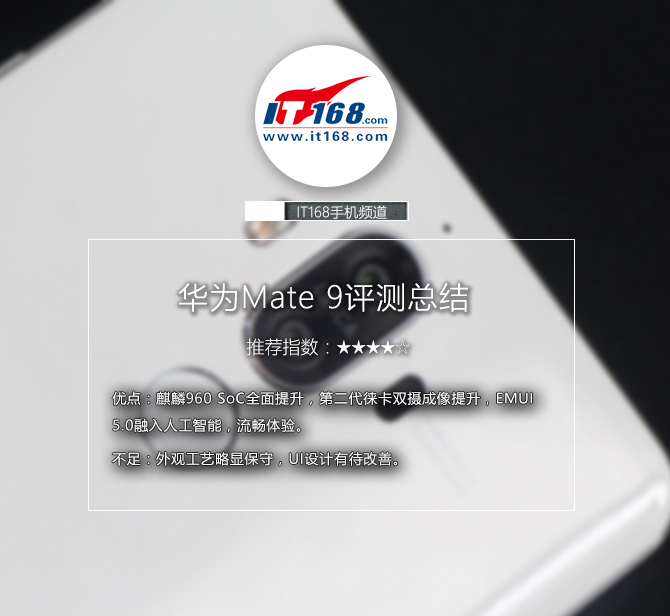
From the point of view of the product, if one word is used to describe Mate 9, I think the word “stability to win†is more consistent with the temperament of Mate 9. The appearance of the Mate series continues the style design and further optimize product details. On the hardware side, the Mate series has always been Huawei's strongest strength. Mate 9 further enhances the processor, system, and camera, while maintaining the high level of the Mate series, including the subtle functions of fast charging. all. The addition of each part of the innovation will increase the overall strength of Mate 9, and in the context of today's serious cell phone homogeneity, more progress will be enough to make Mate 9 take the title of the flagship of the year.
Plug Socket Waterproof Connector
Wonke Electric CO.,Ltd. , https://www.wkdq-electric.com